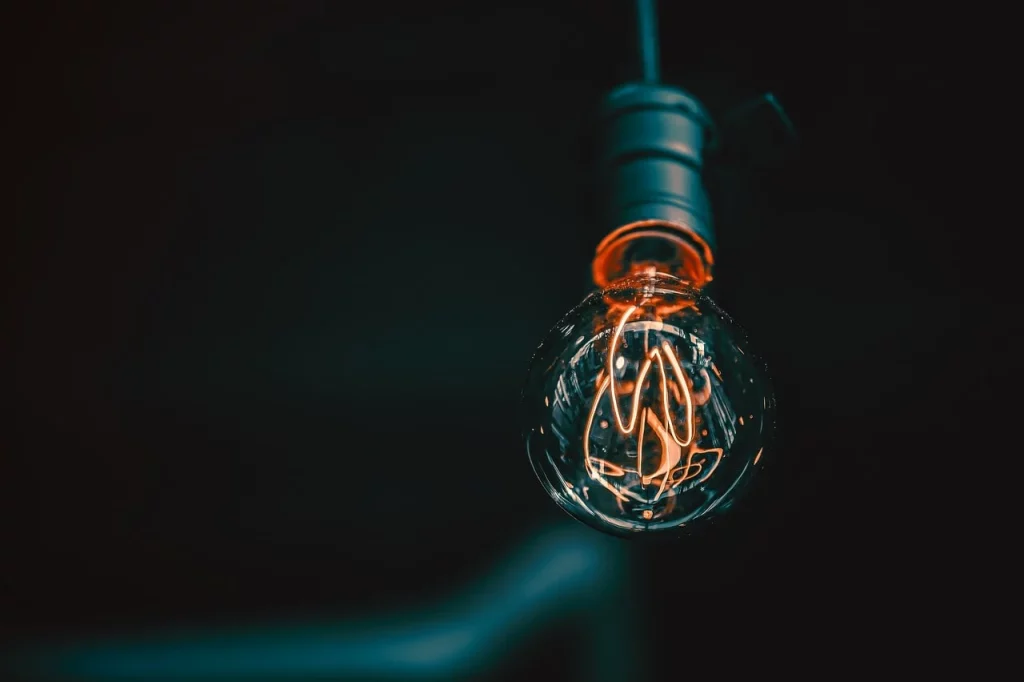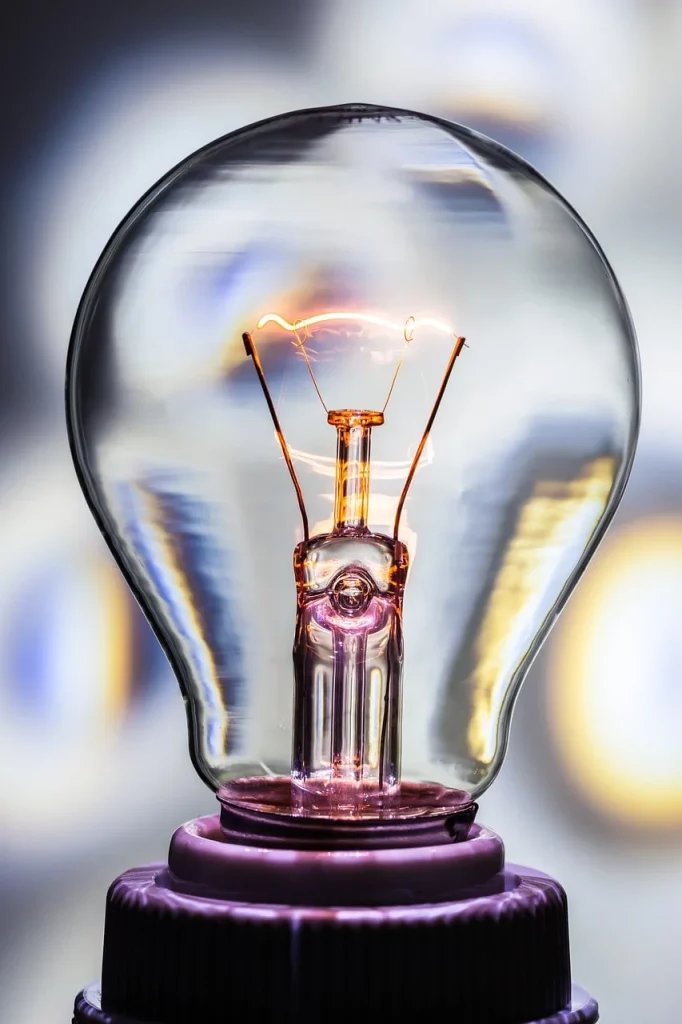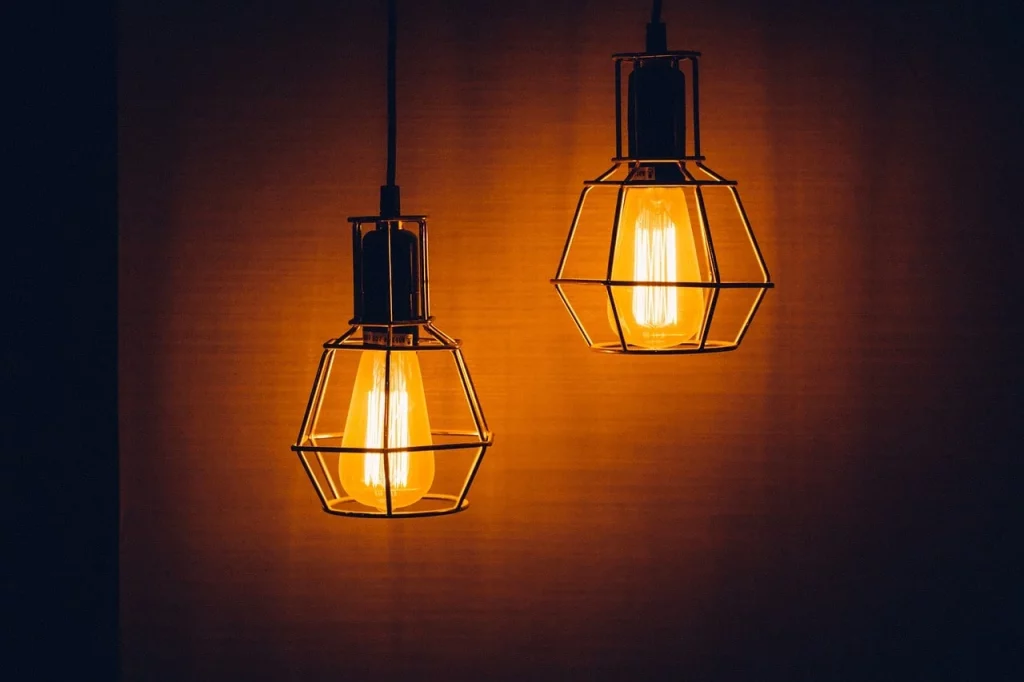Electricity is more than just flicking a switch or charging a phone; it’s a story of human progress. With every invention, from the light bulb to the electric car, we’ve written new chapters in this electrifying narrative. But where did it all begin, and how does electricity really work?
My aim here is to demystify the magic of electricity, taking you through a series of enlightening facts that showcase the ingenuity, challenges, and triumphs of humankind’s quest to harness this dynamic energy. How much of this powerful tale do you already know, and what surprises lie ahead? Let’s start our journey.
Electricity is really just organized lightning.
George Carlin
Electricity Facts
Prepare to be energized as we explore these fun facts about electricity. Pay close attention to each spark of information. Your chance to shine as an electricity expert awaits in the quiz I created for you at the end of this page.
- The speed of electricity through a conductor is approximately 299,792 kilometers per second, nearly the speed of light.
- Lightning strikes produce temperatures five times hotter than the sun’s surface.
- The world’s first public electricity supply was a water wheel powered system in Godalming, UK, in 1881.
- Electric eels generate electricity enough to light up 10 electric bulbs.
- The first practical use of electricity was the telegraph, invented in the 1830s.
- Nikola Tesla envisioned and experimented with the concept of wireless electricity in the late 1800s.
- Static electricity is the reason why your clothes stick together when they come out of the dryer.
- Electricity travels at the speed of light – around 300,000 kilometers per second.
- The first electric car was developed in the late 19th century, with Thomas Parker building it in 1884.
- Venus has lightning strikes that are much more powerful than those on Earth.
- The Internet consumes a large amount of electricity, with data centers worldwide using about 1% of global electricity.
- Albert Einstein received the Nobel Prize in Physics in 1921, not for relativity but for his discovery of the photoelectric effect.
- Wind farms can generate electricity from the movement of the air, with some turbines taller than the Statue of Liberty.

- Solar panels convert sunlight into electricity through the photovoltaic effect, discovered in 1839.
- The first power plant owned by Thomas Edison, which opened in New York City in 1882, used coal to generate electricity.
- Benjamin Franklin did not discover electricity, but he did prove that lightning is a form of electrical energy.
- Quantum tunneling is a phenomenon that allows particles to pass through barriers, a principle used in quantum computing.
- The human body conducts electricity, and the resistance of human skin varies from person to person.
- Geothermal power plants generate electricity by harnessing heat from the earth’s interior.
- Superconductors are materials that can conduct electricity without resistance at very low temperatures.
- The first battery was created by Alessandro Volta in 1800, known as the Voltaic Pile.
- Wireless power transfer was first demonstrated by Nikola Tesla in the late 19th and early 20th centuries.
- Electricity generation from nuclear power is based on the heat produced from nuclear fission.
- The ocean can be a source of electric power through tidal movements and thermal energy.
- Thomas Edison’s electric pen, developed in 1875, was among the earliest precursors to the modern tattoo machine.
- The piezoelectric effect allows certain materials to generate electricity when they are mechanically stressed.
- Static electricity is responsible for lightning storms, with clouds building up charges that discharge as lightning.
- The highest voltage ever produced in a lab was 25 million volts by the Particle Beam Fusion Accelerator II.

- Electricity can be generated by moving water, known as hydroelectric power, which is one of the oldest power sources.
- The sun is the ultimate source of most electricity on Earth, powering wind, hydro, and solar energy.
- Microbial fuel cells can generate electricity from the metabolic processes of microorganisms.
- The concept of electricity storage in batteries has been evolving since the 1800s, leading to today’s lithium-ion batteries.
- Static electricity can cause spark discharges that are more than just a nuisance—they can ignite flammable materials.
- Faraday’s Law of Electromagnetic Induction, discovered in the 1830s, is the principle behind electric generators.
- The first electric toaster was invented in 1893, revolutionizing breakfast routines with the power of electricity.
- Electric fish have been known to science since ancient times, with species like the Nile electric fish described by the Egyptians.
- The International Space Station relies on solar panels to generate electricity for its operations.
- Light bulbs haven’t always been efficient; the first models lasted only a few hours before Thomas Edison improved their design.

- Electromagnetic fields are invisible areas of energy associated with the use of electric power and various forms of natural and artificial lighting.
- The first widespread electric tram system was introduced in Richmond, Virginia, in 1888, revolutionizing urban transport with electricity.
- Power lines can emit a buzzing sound due to the corona discharge phenomenon, where electricity ionizes the air around them.
- Before the widespread use of electricity, cities were lit by gas lamps, which posed significant risks due to leaks and explosions.
- The auroras, both northern and southern lights, are spectacular natural displays of Earth’s atmospheric gases being ionized by solar wind.
- A single bolt of lightning can contain up to one billion volts of electricity, enough energy to power a home for a month.
- Electrostatic precipitators are devices that use electricity to remove particles from industrial emissions, significantly reducing pollution.
- The lifecycle of an electron in a typical copper wire is less than a nanosecond due to the speed at which electricity travels.
- Edison and Tesla were rivals in the “War of Currents,” with Edison promoting direct current (DC) and Tesla alternating current (AC) for electric power distribution.
- Renewable energy sources like wind, solar, and hydroelectric power are becoming increasingly important in reducing dependence on fossil fuels for electricity.
- The concept of smart grids aims to improve the efficiency, reliability, and sustainability of the production and distribution of electricity.
- Demand for electricity fluctuates throughout the day, with peak demand periods often occurring in the late afternoon and early evening.
Electricity Myths

We leave the facts behind, and we continue to the next section. Our goal here is to shed light on the truth hidden behind some common myths.
- Power Lines Are Safe to Touch if Not Falling
Electricity from power lines can be extremely dangerous. It’s a common misconception that they’re safe to touch as long as they’re not downed. In reality, the insulation on power lines can wear out, and even without direct contact, electricity can arc to nearby objects or people, causing severe injuries or death. - Rubber Gloves and Shoes Protect You from Electric Shock
While rubber is an insulator and can offer some protection against electrical shock, the common rubber gloves and shoes people wear are not designed to protect against electricity. Specialized, high-voltage insulated gloves and footwear are required to provide protection against electric shock, and even these must be used correctly to be effective. - Electricity Always Takes the Path of Least Resistance
Electricity is driven to return to its source, following multiple paths to complete a circuit. It will divide among all available paths in proportion to their resistance. Therefore, even if a path is not the least resistant, electricity can still flow through it, potentially causing harm. - Birds Get Electrocuted Sitting on Power Lines
Birds often sit on power lines without harm because they are not grounded. Electrocution occurs when there’s a path for electricity to flow to the ground. Since birds touch only the wire and not the ground or another wire at a different voltage, they don’t create such a path. - Small Electrical Appliances Are Safe to Use with Wet Hands
Using electrical appliances with wet hands increases the risk of electric shock. Water is a conductor of electricity, and when hands are wet, it can provide a path for electricity to flow from the appliance to the user, through the body, to the ground, leading to a potentially dangerous situation.
No products found.
Electricity Quotes

Our journey so far has been quite electrifying (shameless pun). Let’s move on to the next section. Below, you will find my list of favorite quotes. Feel free to share yours in the comments so I can add them to the list as well.
We will make electricity so cheap that only the rich will burn candles.
Thomas Edison
Thomas Edison, the inventor of the first practical electric light bulb, envisioned a future where electricity’s affordability and accessibility would transform it into the primary source of light, relegating candles to a luxury.
Electricity is not only present in a magnificent thunderstorm and dazzling lightning, but also in a lamp; so, too, is God not only in the vastness of heaven, but also in the human heart.
Ramakrishna Paramahamsa
Ramakrishna Paramahamsa, an Indian mystic and saint, draws a beautiful analogy between the omnipresence of electricity and the divine, suggesting that both can be found in the grandiose and the mundane.
There are no rules here—we’re trying to accomplish something.
Thomas Edison
Edison, reflecting on his inventive process, especially in the realm of electricity, underscores the importance of innovation and experimentation over following established norms.
If your hate could be turned into electricity, it would light up the whole world.
Nikola Tesla
Nikola Tesla, a pioneer in the development of electric power, highlights the intense energy and potential wasted in negative emotions, suggesting a metaphorical transformation of hate into something as useful as electricity.
The day science begins to study non-physical phenomena, it will make more progress in one decade than in all the previous centuries of its existence.
Nikola Tesla
Tesla, emphasizing the unexplored potential of studying the non-physical aspects of reality, such as electricity, suggests that broadening the scope of scientific inquiry could lead to unprecedented advances.
Electricity FAQ

You’re almost at the quiz, but first, let’s ground our understanding of electricity with this FAQ section. It’s crucial to read closely, as these answers will help you score high.
- Will electricity ever run out?
Electricity itself is a form of energy resulting from the presence and flow of electric charge. It’s not a resource that can “run out” like oil or gas because it’s produced from various sources, including renewable ones like solar, wind, and hydroelectric power. However, the natural resources used to generate electricity, especially non-renewable ones like fossil fuels, are finite and can be depleted. - How is electricity generated?
The core idea is to convert kinetic energy (movement) into electrical energy. This is often done using turbines that rotate when driven by water (in hydroelectric plants), steam (in nuclear or coal-fired plants), or wind (in wind farms). Solar panels, on the other hand, convert sunlight directly into electricity through the photovoltaic effect. - Can electricity flow through the air?
Under certain conditions, electricity can indeed flow through the air. For example, when the electrical charge builds up to a very high level, it can create a sudden discharge, like lightning during a storm or the spark you see when you touch a metal doorknob after walking across a carpeted room. These discharges happen because the electric field becomes strong enough to ionize the air, making it conductive. - Are electricity and magnetism related?
Yes, electricity and magnetism are deeply interconnected, a relationship described by the theory of electromagnetism. Electric currents (flowing electric charges) create magnetic fields, and moving magnetic fields can generate electric currents. This relationship is harnessed in many technologies, from electric motors (which convert electrical energy into mechanical motion) to generators (which do the opposite, converting mechanical motion into electrical energy). - Can electricity travel through wood?
Wood is generally considered an insulator, which means it does not conduct electricity well under normal circumstances. However, it’s not a perfect insulator. Under high voltage conditions, electricity can force its way through wood, albeit inefficiently and potentially causing damage or burning in the process. The moisture content of the wood can also affect its conductivity.
No products found.
Electricity Quiz

Welcome to our electrifying quiz, where the only shock you’ll receive is finding out how much you don’t know. Fail to answer correctly, and you might just find your lights turned off by the ghost of Thomas Edison himself!
Conclusion
To conclude, the story of electricity is a powerful testament to human curiosity and our quest for understanding. It’s a force that weaves through our daily lives, powering everything from our simplest gadgets to our grandest dreams.
As we stand on the brink of new electrical frontiers, let’s charge ahead with respect for this formidable force, mindful of its potential to shape our future. Remember, while electricity might run the world, it’s our responsibility to ensure it does so sustainably and wisely.
As always, let’s finish this article with a funny question: Can an electrician become a current event planner, or would that cause too much resistance in the industry? Let me know in the comments.


